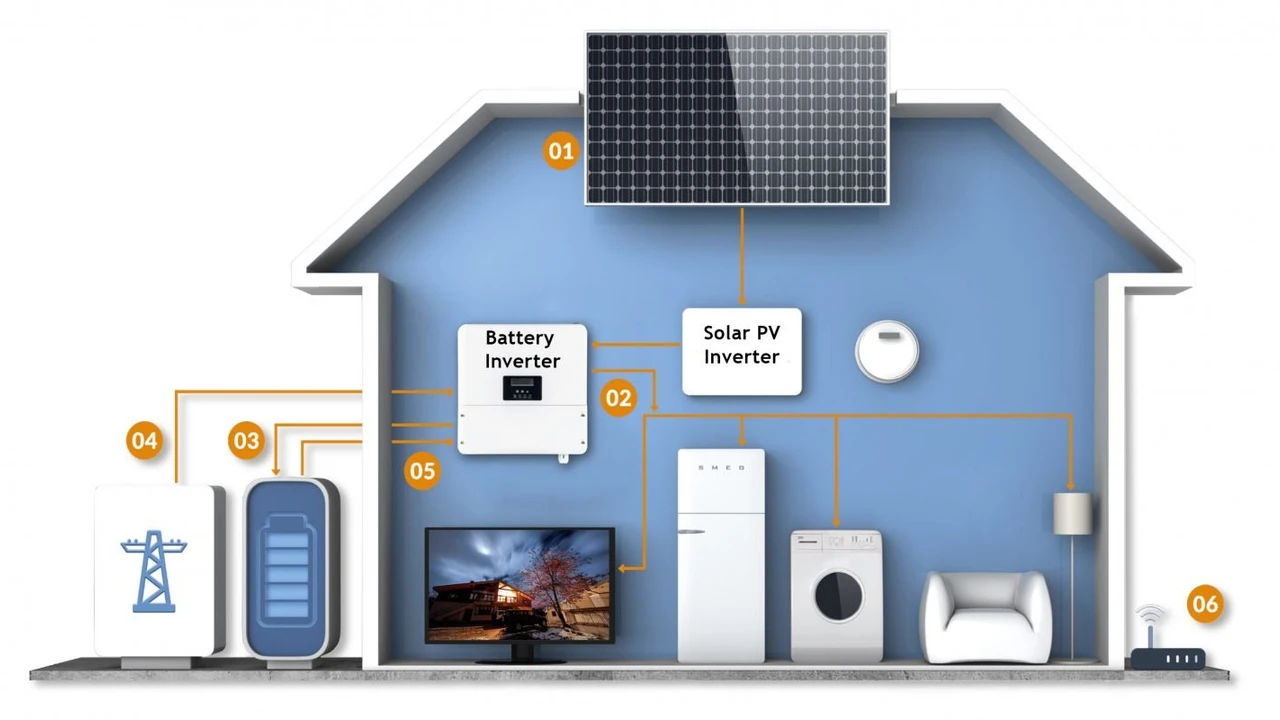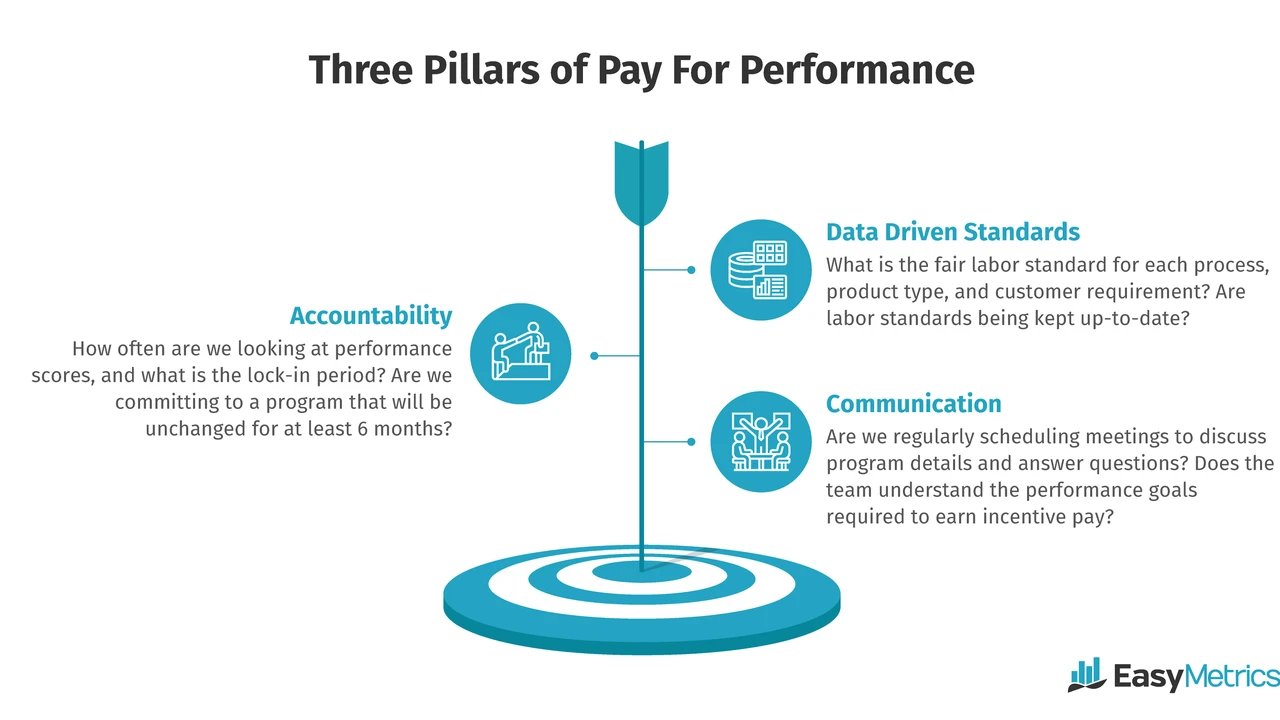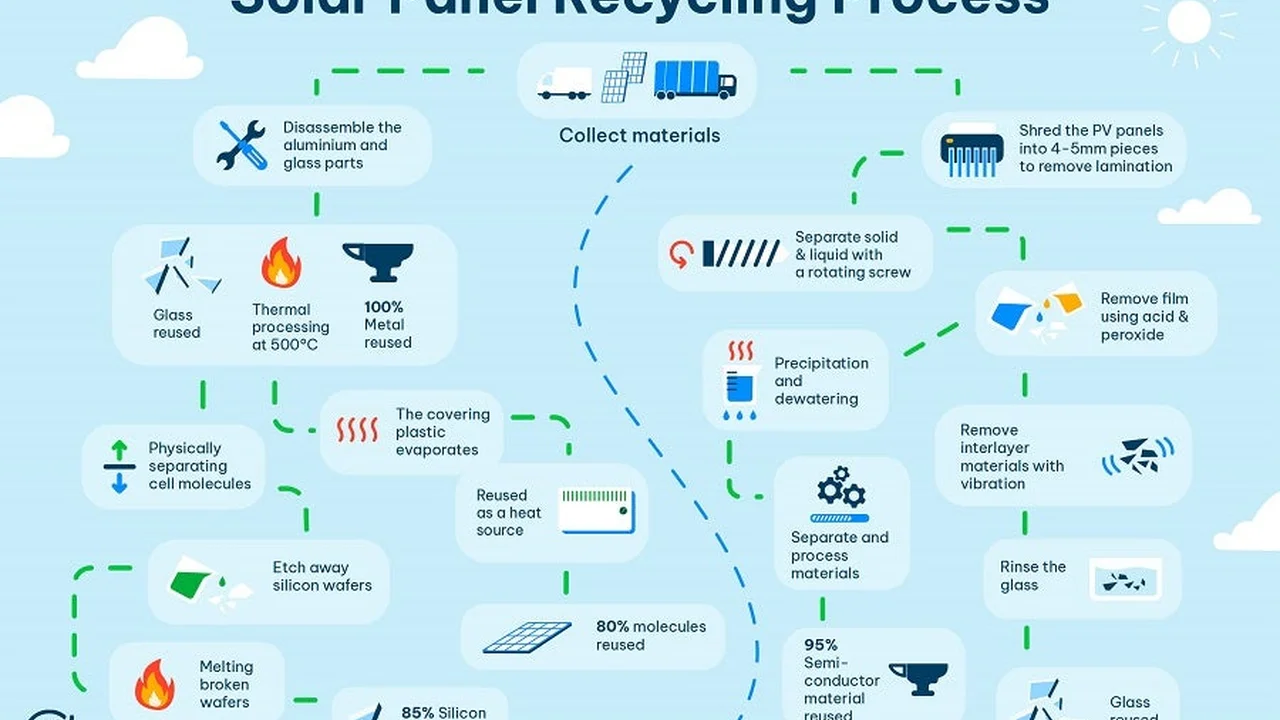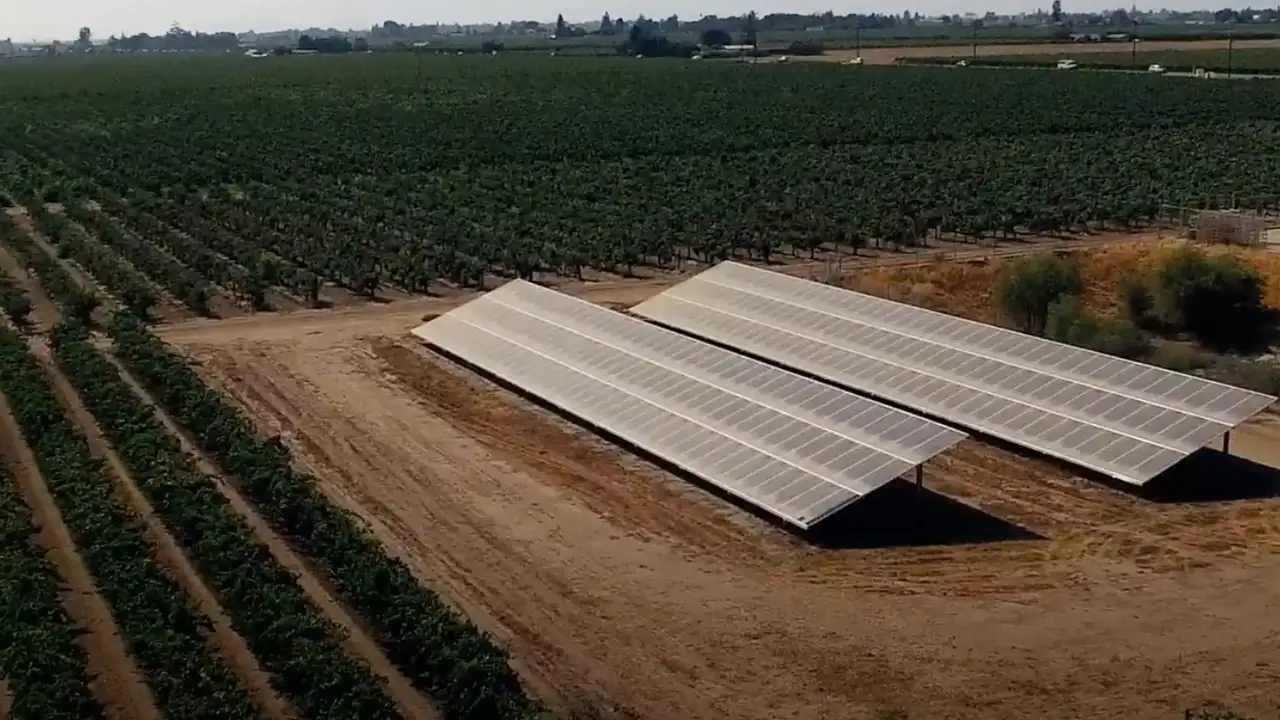The Science Behind Solar Panel Technology Explained
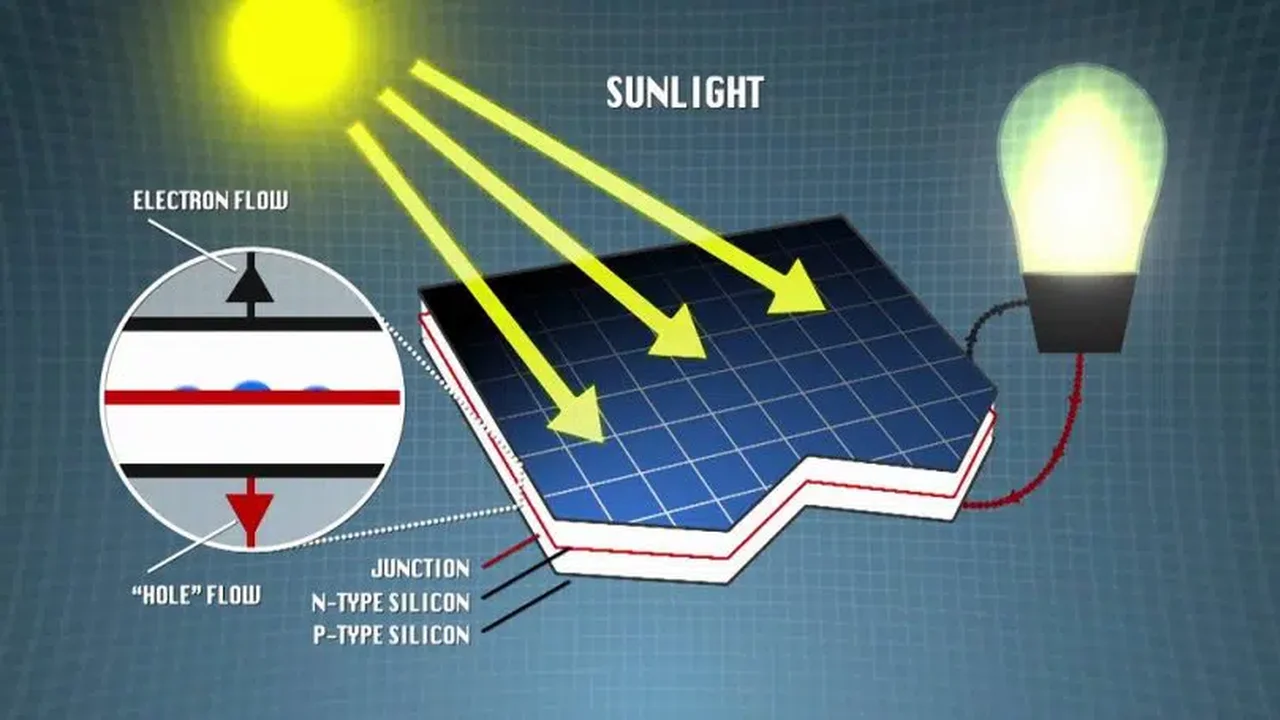
Understanding Solar Panel Technology Basics and How Photovoltaics Work
So, you're curious about solar panels? Awesome! They're not just shiny rectangles on rooftops; they're mini power plants harnessing the sun's energy. The core technology behind them is called photovoltaics (PV). It's a fancy word, but the concept is pretty straightforward. Photovoltaics is the process of converting light (photons) into electricity (voltage). Think of it like this: sunlight knocks electrons loose from atoms, and these electrons flow through an electrical circuit, creating electricity.
The key component in solar panels is the semiconductor material, typically silicon. Silicon is abundant (it's in sand!), and it has properties that make it ideal for this process. It's treated with other elements to create an electrical imbalance, allowing electrons to flow more freely when light hits it.
Exploring Different Types of Solar Panels: Monocrystalline vs Polycrystalline Solar Panels
You'll often hear about monocrystalline and polycrystalline solar panels. What's the difference? Well, it comes down to how the silicon crystals are arranged. Monocrystalline panels are made from a single, pure silicon crystal. This makes them more efficient at converting sunlight into electricity. They're also generally sleeker and darker in appearance. Polycrystalline panels, on the other hand, are made from multiple silicon fragments melted together. They're slightly less efficient but also more affordable.
Think of it like this: monocrystalline is like a perfectly cut diamond, while polycrystalline is like a mosaic. Both are beautiful, but one is a bit more refined and, therefore, more expensive.
Choosing the Right Solar Panel: Efficiency Cost and Installation Considerations
So, how do you choose the right solar panel? A few factors come into play: efficiency, cost, and installation. Efficiency refers to how much of the sunlight that hits the panel is converted into electricity. A higher efficiency panel will generate more power from the same amount of sunlight. Cost is always a factor, of course. Monocrystalline panels are generally more expensive upfront but can save you money in the long run due to their higher efficiency. Installation is another key consideration. Some panels are easier to install than others, and the complexity of the installation can affect the overall cost.
Consider your energy needs, budget, and the amount of sunlight your roof receives. A professional solar installer can help you assess these factors and recommend the best panel for your situation.
Recommended Solar Panel Products and Their Applications
Let's dive into some specific solar panel recommendations. These are just a few examples, and the best choice for you will depend on your specific needs and circumstances.
REC Group Alpha Series
The REC Group Alpha Series are high-efficiency monocrystalline panels known for their excellent performance and durability. They're a great choice for residential and commercial applications where space is limited and maximum power output is desired. These panels can handle partial shading well and are known for their robust construction.
Typical Use Case: Residential rooftops with limited space, commercial buildings requiring high power output.
Price Range: $300 - $400 per panel (depending on wattage and retailer).
Panasonic EverVolt Series
Panasonic EverVolt panels are another excellent option, known for their high efficiency and reliability. They often come with a comprehensive warranty, providing peace of mind. These panels are a good choice for homeowners looking for a long-term investment.
Typical Use Case: Residential homes, especially those in areas with high electricity costs.
Price Range: $350 - $450 per panel (depending on wattage and retailer).
SunPower Maxeon Series
SunPower Maxeon panels are often considered the gold standard in solar panel technology. They boast exceptional efficiency and durability, and their unique design minimizes degradation over time. However, they also come with a premium price tag. These are a great choice for those who want the best possible performance and are willing to pay for it.
Typical Use Case: High-end residential installations, commercial projects where maximum efficiency is critical.
Price Range: $400 - $550 per panel (depending on wattage and retailer).
Comparing Solar Panel Products: Performance Warranty and Cost Analysis
When comparing solar panels, consider these key factors:
* **Efficiency:** How much sunlight is converted into electricity? Look for a higher percentage. * **Warranty:** How long is the panel guaranteed to perform at a certain level? A longer warranty indicates higher quality and reliability. * **Temperature Coefficient:** How does the panel's performance degrade in hot weather? A lower temperature coefficient is better. * **Cost:** What's the upfront cost, and what are the long-term savings? Consider the levelized cost of energy (LCOE).Here's a quick comparison table:
| Panel | Efficiency | Warranty | Price (approx.) |
|---|---|---|---|
| REC Group Alpha | 21.7% | 25 years | $350 |
| Panasonic EverVolt | 22.2% | 25 years | $400 |
| SunPower Maxeon | 22.8% | 25 years | $500 |
Remember to get quotes from multiple installers and compare the overall cost of the system, including installation, permits, and any other associated fees.
Solar Panel Applications: Residential Commercial and Off-Grid Usage
Solar panels aren't just for rooftops! They have a wide range of applications:
* **Residential:** Powering homes, reducing electricity bills, and increasing property value. * **Commercial:** Powering businesses, reducing operating costs, and demonstrating environmental responsibility. * **Off-Grid:** Powering remote cabins, RVs, and other locations without access to the grid. * **Solar Farms:** Large-scale installations that generate electricity for the grid.The possibilities are endless! As technology improves and costs come down, solar panels will continue to play an increasingly important role in our energy future.
Understanding Solar Panel Costs and Available Incentives
The cost of solar panels has decreased dramatically in recent years, making them more affordable than ever. However, it's still a significant investment. Fortunately, there are many incentives available to help offset the cost.
* **Federal Tax Credit:** The federal government offers a tax credit for a percentage of the cost of a solar panel system. * **State and Local Incentives:** Many states and local governments offer additional incentives, such as rebates, tax credits, and property tax exemptions. * **Net Metering:** Allows you to sell excess electricity back to the grid, further reducing your electricity bill.Research the incentives available in your area to maximize your savings. A qualified solar installer can help you navigate the process.
Maintaining Solar Panels: Cleaning and Performance Monitoring Tips
Solar panels are relatively low-maintenance, but they do require some basic care to ensure optimal performance. Keep them clean by rinsing them with water periodically. Avoid using harsh chemicals or abrasive cleaners. Consider hiring a professional cleaning service if you live in an area with heavy pollution or dust.
Monitor your system's performance to identify any issues early on. Many inverters come with monitoring software that allows you to track your energy production and identify any potential problems.
Future Trends in Solar Panel Technology: Perovskite Solar Cells and Beyond
The future of solar panel technology is bright! Researchers are constantly working on new materials and designs to improve efficiency and reduce costs. One promising technology is perovskite solar cells. Perovskites are materials that have a crystal structure similar to the mineral perovskite. They have the potential to be much more efficient and cheaper to produce than traditional silicon solar cells.
Other exciting developments include bifacial solar panels (panels that generate electricity from both sides) and flexible solar panels (panels that can be integrated into a variety of surfaces).
The solar revolution is just getting started!
:max_bytes(150000):strip_icc()/277019-baked-pork-chops-with-cream-of-mushroom-soup-DDMFS-beauty-4x3-BG-7505-5762b731cf30447d9cbbbbbf387beafa.jpg)



